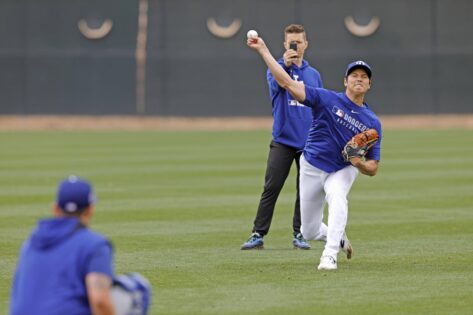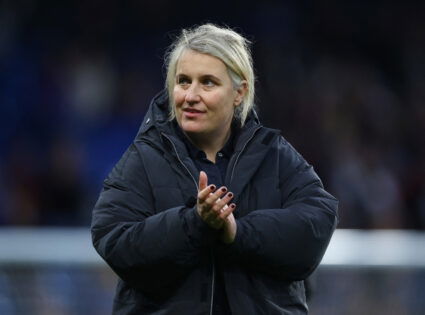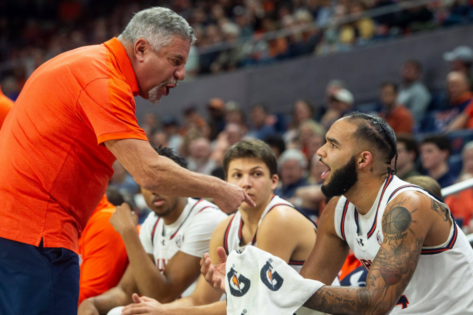Baseball loves its traditions—especially the ones that make no sense until you read the fine print. Shohei Ohtani may be rewriting the sport’s history books, but MLB seems equally committed to keeping the pen out of everyone else’s hands. In a league built on opportunity, it’s remarkable how efficiently the rulebook can nail a door shut.
If there is one guy who can overtake Babe Ruth as the GOAT, it is Ohtani. And with the current career trajectory, he is well on his way to doing so. But did the MLB make it fair for upcoming players by making the rule change in 2020?
This June, Ohtani finally stepped back onto the mound, ending a 21-month pitching drought. Moments later, MLB’s lone two-way star flipped the script—leading off for the Dodgers before the cheers had even settled. His comeback was more than symbolic—it reaffirmed his rare status under MLB’s strict two-way designation rules. To keep that status in 2025, Ohtani qualified by meeting the 20 innings pitched and 20 games as a hitter requirement in 2023.
Ohtani stands alone because no other player has matched his dual excellence since his debut with the Angels in 2018. As Kansas City Royals pitcher Michael Lorenzen said, “Shohei kind of came in and he’s like the Babe Ruth of hitting and pitching.” That towering benchmark discourages organizations from experimenting unless a player is truly elite in both skill sets. Even the most talented prospects risk being compared to Ohtani, making “above average” at both positions feel insufficient to justify the gamble.
One reason more players have not followed Ohtani’s path lies in the challenges of player development. Teams often decide by the time a player is drafted whether they will pitch or hit, closing off one path entirely. San Diego Padres infielder Jake Cronenworth expressed frustration at this reality: “Why does somebody need to qualify for something they’ve already proven they can do in college or the minor leagues?”
Credit: Robert Gauthier / Los Angeles Times
This rigid development approach ensures that two-way ambitions are often sidelined before they can be tested in the majors.
For those who make it further, MLB’s roster rules significantly limit opportunities to showcase both skills during the season. Without the two-way designation, a player can only pitch in extra innings or blowout situations. That limitation not only stalls development but also discourages managers from attempting the experiment at the highest level. The lack of in-game flexibility becomes a practical barrier for teams, especially when roster spots are precious.
Finally, injury risk looms as the ultimate deterrent, even for those capable of handling both demands. Royals reliever Lucas Erceg abandoned hitting after suffering arm soreness and elbow strain while trying to do both weekly. As one NL scout put it plainly, “It all goes back to the number one fear: injury… Teams are scared to risk hurting their best hitter or one of their best hitters.” Combined with the strategic and logistical complications, that fear ensures Ohtani’s example will remain a rare anomaly rather than the start of a trend.
Ohtani may be the gold standard, but MLB’s rulebook ensures he’s also the exception. The league has essentially built a velvet rope around the two-way club—Ohtani gets in, everyone else waits outside. Until teams are willing to challenge both tradition and their own risk aversion, the throne will remain a one-man seat. And in baseball’s grand theater, it seems MLB prefers its miracles to be strictly limited edition.
Even the “two-way” status can’t keep Shohei Ohtani away from accusations
Baseball’s rulebook can keep Ohtani in a category all his own, but it can’t shield him from headlines. MLB may have perfected the art of limiting who can follow in its footsteps, yet scrutiny seems to have no such restrictions. In a sport obsessed with both legends and loopholes, Ohtani is discovering that even greatness comes with a permanent asterisk-shaped spotlight.
Kevin J. Hayes Sr. and Tomoko Matsumoto have pitched a legal curveball at Ohtani and Nez Balelo. The $240 million Hapuna Coast luxury housing project is now a courtroom diamond, and the stakes aren’t small. The plaintiffs claim Ohtani and Balelo “exploited their celebrity leverage to destabilize and ultimately dismantle Plaintiffs’ role in the project.” They allege that Kingsbarn Realty Capital, their business partner, caved to Balelo’s demands and fired them without cause. According to the lawsuit, the move cost them millions in profit, management fees, and commissions.
The dispute centers on The Vista at Mauna Kea Resort, where Ohtani was billed as “Japan’s Babe Ruth” and “1st Resident.” Marketing promised he would buy a residence, train there in the off-season, and boost Japanese buyer interest. As of now, Balelo’s agency has declined comment, and Kingsbarn officials remain unreachable.
In the end, Hayes Sr. and Matsumoto’s fight isn’t about lost millions; it’s about the kind of power that money can’t buy. Shohei Ohtani may have mastered hitting baseballs into the stratosphere, but now he’s swinging in a far less forgiving arena.
The post Shohei Ohtani’s Two-Way Reign Poised to Endure As MLB’s Bizarre Rule Blocks Potential Challengers appeared first on EssentiallySports.



